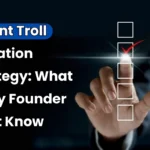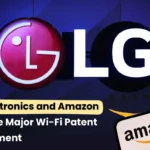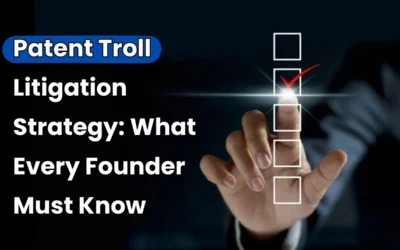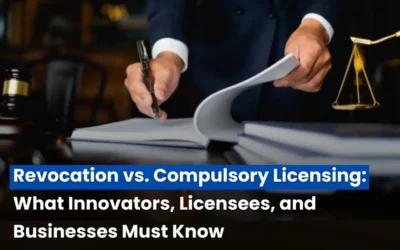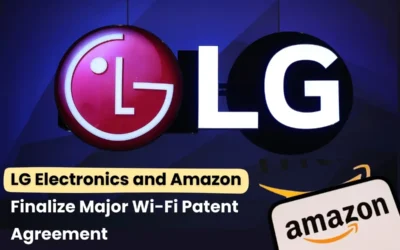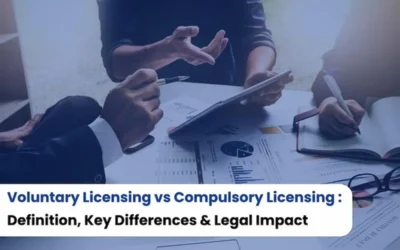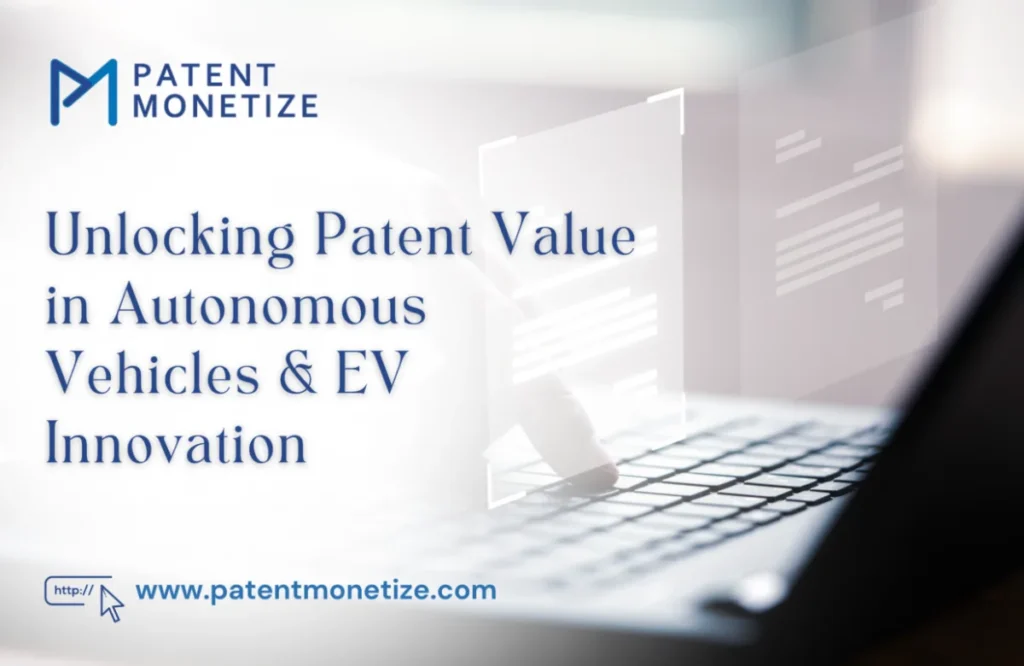
The innovation brought about by technology in the manufacture of autonomous vehicles (AVs) and electric vehicles (EVs) has created the motor business new horizons for entrepreneurs and business corporations to capitalize on intellectual property (IP) protection. Patents now present the most prized asset in this business landscape as they enable companies to protect their technological innovation, attain market leadership, and reap astronomic streams of revenue through patent licensing and technology partnership.
The Rising Importance of Patents in Autonomous Vehicles & EV Innovation
As automotive technology moves from gas burn engines to electricity and autonomous vehicles, patents are becoming smart intellectual property for automotive players. Auto tech leaders, leading automobile companies, and new entrants are making massive bets on autonomous software, batteries, sensors, and car connectivity technology. Patent protection not only protects such technology, but also assigns values to the company and opens doorways for cross-industry partnerships and license incomes.
Key Innovation Areas Driving Patent Filings
Battery Technologies
Mass-scale innovation due to the transition towards electric vehicles has driven battery technology, and it is now one of the patent filing spaces within the automobile category. Firms are filing patents on technology in the direction of safeguarding innovation in:
- Lithium-ion Batteries: Innovation in energy density, battery life, and heat resistance.
- Solid-State Batteries: Innovation through enhanced safety through enhanced energy capability and miniaturization.
- Ultra-Fast-Charging Systems: Millisecond-charging battery systems and ultra-fast charging systems.
- Battery Recycling: Material recycling and green battery disposal processes to offer minimized environmental expenses.
- Thermal Management Systems: Enhanced thermal management systems to avoid heat-up and offer overall battery efficiency.
Types of Patents Filed in Battery Technologies:
- Utility Patents: Such as new and novel battery manufacturing processes, chemical recipes, and energy management systems.
- Design Patents: New battery cell, module, and pack designs.
- Process Patents: Exclusive production and recycling processes.
Autonomous Driving Systems
The race to create autonomous vehicles has set a war of patents in machine intelligence, perception, and control systems:
- Liar Systems: Advanced Liar sensors for mapping the environment with high precision.
- Radar Systems: Advanced radar systems for round-the-clock detection and collision prevention.
- Machine Learning algorithms: To enable the ability of cars to learn from real-world driving situations.
- Sensor Fusion: Merging radar, Liar, and camera sensor signals to offer a common world awareness.
- Computer Vision: Computer algorithms for pattern and image recognition of road signs, obstacles, and pedestrians.
Types of Patents Filed in Autonomous Driving:
- Utility Patents: Keeping core technologies such as sensor technology, vehicle control by software, and autonomous driving software.
- Software Patents: AI trend revolutions, image processing software, and predictive behaviour models.
- Hardware Patents: For car computer, braking technology, and sensor.
Vehicle Connectivity
Automotive connectivity technologies have transformed how cars communicate with consumers, other vehicles, and infrastructure. Patent applications in this field acknowledge:
- Vehicle-to-Vehicle (V2V) Communication: Data exchange among cars in real-time to avoid accidents and congestion.
- Vehicle-to-Infrastructure (V2I) Communication: Vehicle infrastructure-based systems to talk to city infrastructure, road sensors, and traffic lights.
- 5G Integration: Wireless high-speed data connectivity for infotainment, navigation, and remote diagnosis of vehicle features.
- Cyber security Solutions: Intrusion detection solutions and encryption algorithms to prevent hacking and maintain data privacy.
Types of Patents Filed in Vehicle Connectivity:
- Communication Patents: Communication protocols patents, signal processing technologies patents, and V2X systems patents.
- Vehicle Network Security Patents: Vehicle network security system patents and encryption algorithm patents.
- Data Management System Patents: Data management system patents, connectivity interface patents, and remote monitoring system patents.
Software and AI Integration
Car tech revolution opened door of opportunity to patent in area of intelligent software systems:
- Advanced Driver Assistance Systems (ADAS): Lane departure warning, automatic parking, and adaptive cruise control.
- Gigabyte and millisecond processing of motor vehicle sensor data software.
- Edge computing: Dispersed computer systems to reduce application environments’ latency levels for safety purposes.
- Predictive analytics: Data-driven by virtue of the data which sustains maximum vehicle performance optimization and maintenance stages.
Types of Patents Filed in Software and AI Integration:
- Software Patents: Car-saving algorithms, predictive maintenance software, and saving machine learning algorithms.
- Data Processing Patents: Full data process patents, real-time processing patents, and distributed computer architecture.
- Human-Machine Interface (HMI) Patents: Voice command system technology patents, touchless patents, and instrument panel augmented reality patents.
Energy Efficiency
Increased efficiency is a second type of EV technology patent filing since technology that offers increased vehicle range and reduced energy usage:
- Regenerative Braking Systems: Kinetic Energy Recuperation Braking Systems and Utilization Thereof as Efficient Electric Power.
- Light Weight Materials: Lightweight, high-strength alloys, carbon, and composite materials for lowering the weight of the vehicle.
- Aerodynamic Designs: Vehicle body structures that reduce drag and improve airflow efficiency.
- Power Optimization: Power optimizing systems for battery life as well as electric motor power.
Types of Patents Filed in Energy Efficiency:
- Component Patents: Lightweight body parts, aerodynamics parts, and energy recovery parts.
- Process Patents: Methods to design new materials and manufacture vehicles.
- System Patents: Streamline power technology and energy recuperation systems.
Unlocking Patent Value: Strategies for AV & EV Companies
1. Patent Licensing
Patent licensing agreements enable businesses to generate revenues by providing other companies with rights to use patented technology. It is most applicable in software technologies, sensor technologies, and battery technologies. Licensing can be:
- Exclusive Licensing: Providing rights to a single company.
- Non-exclusive Licensing: Providing rights to several companies at the same time.
- Hybrid Licensing: A merger of licensing and co-development contracts.
2. Cross-Licensing Agreements
Cross-licensing allows technology companies and auto manufacturers to swap patent rights, lowering the threat of suits and speeding
innovation. Cross-licensing contracts are most prevalent where patents overlap and standard setting is present, e.g., EV battery control and autonomous car algorithms.
3. Defensive Patenting
Having a good portfolio of patents provides cover in the event of cases of infringement and provides cover to patents in the event other competitors attempt to utilize proprietary technology. Business organizations thus have an assurance of bargaining power with each case of patent disputes.
4. Patent Pools
Collaboration between industry players in creating patent pools allows companies to license patents collectively, level playing field access to industry innovation being made available. Patent pools work optimally in standard-setting industries such as vehicle-to-vehicle (V2V) communications and battery cell technology.
5. Technology Partnerships
Co-innovation of technologies in co-ownership of patents because value proposition of early market entry pre-emptions and pipelines of innovations can be achieved by collaboration with EV start-ups, software companies, and chip companies. Patent co-ownership is a balance of risk and return.
Maximizing Patent Portfolio Value
1. Patent Valuation
Patent valuation includes technical value appraisal, demand in the market, and commercial attractiveness. Companies can:
- Cost-based Valuation: R&D cost and patent-application cost.
- Market-based Valuation: Comparable patent transactions.
- Income-based Valuation: Future royalties expected from licensing.
2. Portfolio Management
Keeping it up to date and under constant review with new patent filings ensures that it is consistent with R&D objectives and changes in market trends. Patents that are not desired can be disposed of to release capital to produce blockbusters.
3. Litigation Readiness
Firms have to make their patents enforceable and add law provisions that will deter infringers. Patent infringement suits will provide damages and deter others from infringing on them.
4. Geographic Coverage
It patents the world’s largest motor vehicle markets such as the US, Europe, China, Japan, and India to acquire maximum protection everywhere in the world and access to their markets.
Real-World Examples
- Tesla: Open-sourced a few EV patents to promote industry expansion while reserving proprietary innovative battery breakthroughs.
- Waylon: Has hundreds of autonomous vehicle algorithmic and Liar patents, as its market dominance.
- Toyota: Invested significantly in solid-state battery patents and led the way in next-generation battery tech.
Key Challenges in Patent Management
- Patent Thickets: Competing patents can discourage innovation and result in expensive court fights.
- Innovative Speed: High-speed changing technology can make patents obsolete even before market commercialization.
- Global Enforcement: Enforcement of patents all over the globe may be costly and time-consuming.
Read Also:What Should I Do If My Patents Are Being Infringed In Internationally ?
Conclusion
EV age and autonomous future patents are intellectual property strategy, not filings, that innovate, build market leadership, and create new revenue opportunities. Those firms dedicated to constructing strong patent positions, exploiting licensure opportunities, and selling cross-industry collaborations will be well-positioned to define the mobility future.
